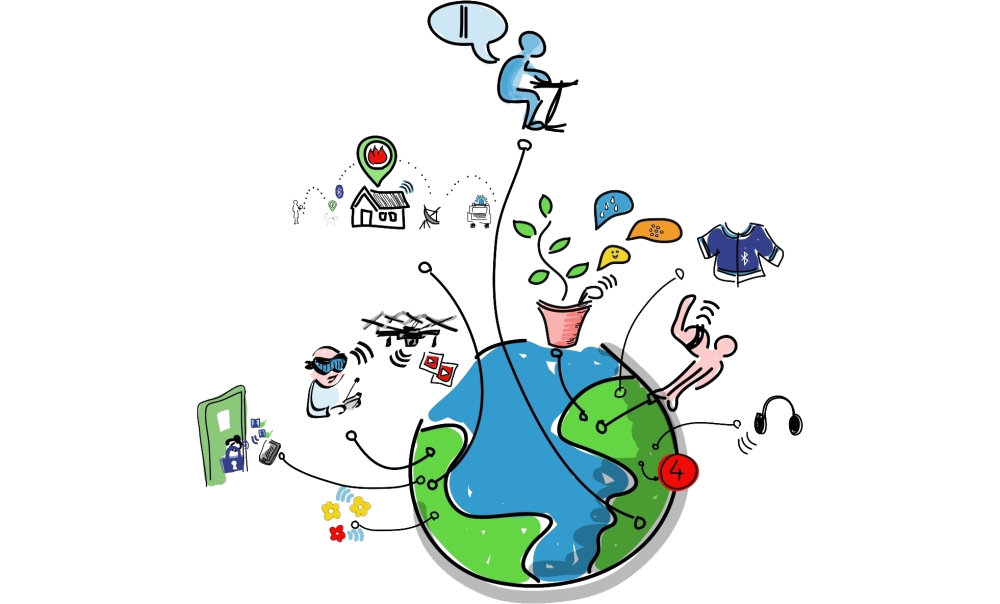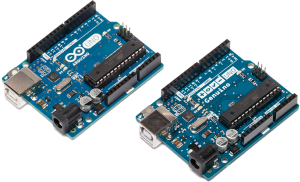What is the IoT (Internet of Things)?
The IoT (Internet of Things) is the network of physical devices, vehicles, and other items embedded with electronics, software, sensors, actuators, and network connectivity which enable these objects to collect and exchange data.
Brief description of IoT
The IoT (Internet of Things) allows objects to be sensed or controlled remotely across existing network infrastructure, creating opportunities for more direct integration of the physical world into computer-based systems and resulting in improved efficiency, accuracy and economic benefit in addition to reduced human intervention.
When IoT is augmented with sensors and actuators, the technology becomes an instance of the more general class of cyber-physical systems, which also encompasses technologies such as smart grids, virtual power plants, smart homes, intelligent transportation, and smart cities. Each thing is uniquely identifiable through its embedded computing system but can interoperate with the existing Internet infrastructure.
Experts estimate that the IoT will consist of about 30 billion objects by 2020.
Key Characteristics of IoT
There are mainly six key characteristics of IoT (Internet of Things)
Intelligence
- Together algorithms and compute (i.e. software & hardware) provide the “intelligent spark” that makes a product experience smart. Consider Misfit Shine, a fitness tracker, compared to Nest’s intelligent thermostat. The Shine experience distributes compute tasks between a smartphone and the cloud. The Nest thermostat has more compute horsepower for the AI that makes them smart.
Connectivity
- Connectivity in the IoT is more than slapping on a Wi-Fi module and calling it a day. It enables network accessibility and compatibility. Accessibility is getting on a network while compatibility provides the common ability to consume and produce data. If this sounds familiar, that’s because it is Metcalfe’s Law and it rings true for IoT.
Sensing
- We tend to take for granted our senses and the ability to understand the physical world and the people around us. Sensing technologies provide us with the means to create experiences that reflect a true awareness of the physical world and the people in it.
Expressing
- Expressing enables interactivity with people and the physical world. Whether it is a smart home or a farm with smart agriculture technology, expressing provides us with a means to create products that interact intelligently with the real world. This means more than just rendering beautiful UIs to a screen. Expressing allows us to output into the real world and directly interact with people and the environment.
Energy
- Without energy, we can’t bring our creations to life. The problem is we can’t create billions of things that all run on batteries. Energy harvesting, power efficiency, and charging infrastructure are necessary parts of a power intelligent ecosystem that we must design. Today, it is woefully inadequate and lacks the focus of many product teams.
Safety
- As we gain efficiencies, novel experiences, and other benefits from the IoT, we must not forget about safety. As both the creators and recipients of the IoT, we must design for safety. This includes the safety of our data and the safety of our physical well-being. Securing the endpoints, the networks, and the data moving across all of it means creating a security paradigm that will scale.
Different Boards used in IoT
There is a widely available range of boards used for the Internet of Things. Developers will have to choose from microcontroller-based boards, System on Chip (SOC) boards, Single-board Computers (SBC) and purpose-built boards with support for Smart Bluetooth and WiFi. Top four boards used for IoT are
- Arduino Uno
- Raspberry Pi
- Intel Edison
- Particle Photon
Introduction to Arduino Boards
Arduino Boards are widely used development board for IoT. Arduino Uno is a widely used board amongst the Arduino Family. There are also many other boards like Arduino Mega 2560, Arduino Nano, Arduino 101 and many more.
There are many shields are like Arduino Ethernet, WiFi, Wireless SD Shield, etc.
Different sensors for IoT
There are many sensors are available for IoT in the market manufactured by different companies.
Widely used sensors for IoT are as below
- Temperature Sensor
- Proximity Sensor
- Pressure Sensor
- Water Quality Sensor
- Chemical Sensor
- Gas Sensor
- Smoke Sensor
For more details about the Internet of Things, visit: en.wikipedia.org/wiki/Internet_of_things

